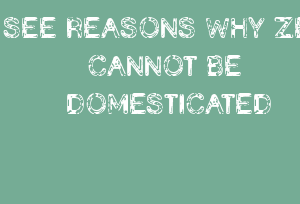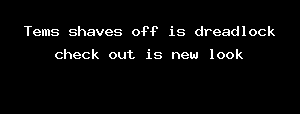News And PoliticsCommunications And EntertainmentSports And FitnessHealth And LifestyleOthersGeneralWorldnewsBusiness And MoneyNigerianewsRelationship And MarriageStories And PoemsArts And EducationScience And TechnologyCelebrityEntertainmentMotivationalsReligion And PrinciplesNewsFood And KitchenHealthPersonal Care And BeautyBusinessFamily And HolidaysStoriesIT And Computer ScienceSportsRelationshipsLawLifestyleComedyReligionLifetipsEducationMotivationAgriculturePoliticsAnnouncementUSMLE And MedicalsMoneyEngineeringPoemsSocial SciencesHistoryFoodGive AidBeautyMarriageQuestions And AnswersHobbies And HandiworksVehicles And MobilityTechnologyFamilyPrinciplesNatureQuotesFashionAdvertisementChildrenKitchenGive HelpArtsWomenSpiritualityQuestions AnsweredAnimalsHerbal MedicineSciencePersonal CareFitnessTravelSecurityOpinionMedicineHome RemedyMenReviewsHobbiesGiveawayHolidaysUsmleVehiclesHandiworksHalloweenQ&A
Social Sciences
profile/6930515522302c03edfab21f9c50b77c4dc.jpg
Emzy

SEE REASONS WHY ZEBRA CANNOT BE DOMESTICATED
~1.7 mins read
There is a reason you don't
It can be done. But that doesn’t mean it is to-be-done.
In the late 19th century, we began an initiative to domesticate zebras. It all stemmed from operations in Africa where horses, due to climate and hostile insects, were failing to adapt.
One test zebra in the pilot program, named Dan, was hostile towards efforts to breed him with wild donkeys and horses. Dan wasn’t down with the swirl.
He, like most zebras, was immensely strong, disagreeable—and don’t even think about riding him(Source: How Dan the Zebra Stopped an Ill-Fated Government Breeding Program in Its Tracks. Smithsonian Magazine. Taylor, William)
Dan wasn’t an exception to a rule.
Zebras can be sweet animals. Some of them can roam with horses and actively do.
Eventually, some zebras were able to be trained into pulling carts:
But the juice wasn’t worth the squeeze.
Zebras are born into some of the most hostile predatory terrains in the world. They evolved to shake large cats off themselves, not graze in meadows unchallenged.
Consequently, their breeding favors an irascible, defiant, violent nature. They are stronger than they look. And it gives them the edge they need to escape, and fight past endless hungry jaws.
Don’t try to ride Zebraprofile/4900Pngtreecallbyphone_4440428.png
Aliyu4190

Tems Shaves Off Is Dreadlock Check Out Is New Look
~4.3 mins read
Rema Shaves Off His Dreadlocks To Protest Against SARS
tooxclusive.com
Oct 10, 2020 7:34 PM
Mavin singer, Rema has surprised fans with a new hairstyle on social media.
Keeping dreads, looking dapper, and having a nice car or phone seemingly gets the attention of these criminals in uniforms and what usually happens next isn’t pleasant. Some Nigerian youths have been forced to take off their dreads and due to this Rema is on a mission to create awareness with his latest hairstyle.
The singer who has been on dreads since he made his debut with “Dumebi†cut them off for a much lower hair cut to lend his support to the ongoing protests against police brutality across the country. Taking to his twitter page, he wrote that keeping dreads doesn’t mean he is a criminal. He wrote: “Rema to the surprise of many of his fans debuted a new hairstyle on his social media.â€
Read in Opera News for a better reading experience
Just need 1MB to download

 4
4 dislike
dislike
profile/5309IMG_20181126_191303.jpg
Ematy1

CREATIVITY IN A BROADER VIEW
~2.7 mins read
There has been much empirical study in psychology and cognitive science of the processes through which creativity occurs. Interpretation of the results of these studies has led to several possible explanations of the sources and methods of creativity.
INCUBATION
Incubation is a temporary break from creative problem solving that can result in insight. There has been some empirical research looking at whether, as the concept of "incubation" in Wallas' model implies, a period of interruption or rest from a problem may aid creative problem-solving. Ward[38] lists various hypotheses that have been advanced to explain why incubation may aid creative problem-solving, and notes how some empirical evidence is consistent with the hypothesis that incubation aids creative problem in that it enables "forgetting" of misleading clues. Absence of incubation may lead the problem solver to become fixated on inappropriate strategies of solving the problem. This work disputes the earlier hypothesis that creative solutions to problems arise mysteriously from the unconscious mind while the conscious mind is occupied on other tasks. This earlier hypothesis is discussed in Csikszentmihalyi's five phase model of the creative process which describes incubation as a time that your unconscious takes over. This allows for unique connections to be made without our consciousness trying to make logical order out of the problem.
CONVERGENT AND DIVERGENT THINKING
J. P. Guilford drew a distinction between convergent and divergent production (commonly renamed convergent and divergent thinking). Convergent thinking involves aiming for a single, correct solution to a problem, whereas divergent thinking involves creative generation of multiple answers to a set problem. Divergent thinking is sometimes used as a synonym for creativity in psychology literature. Other researchers have occasionally used the terms flexible thinking or fluid intelligence, which are roughly similar to (but not synonymous with) creativity.
CREATIVE COGNITION APPROACH
In 1992, Finke et al. proposed the "Geneplore" model, in which creativity takes place in two phases: a generative phase, where an individual constructs mental representations called preinventive structures, and an exploratory phase where those structures are used to come up with creative ideas. Some evidence shows that when people use their imagination to develop new ideas, those ideas are heavily structured in predictable ways by the properties of existing categories and concepts. Weisberg argued, by contrast, that creativity only involves ordinary cognitive processes yielding extraordinary results.
The Explicit–Implicit Interaction (EII) theory Edit
Helie and Sun more recently proposed a unified framework for understanding creativity in problem solving, namely the Explicit–Implicit Interaction (EII) theory of creativity. This new theory constitutes an attempt at providing a more unified explanation of relevant phenomena (in part by reinterpreting/integrating various fragmentary existing theories of incubation and insight).
The EII theory relies mainly on five basic principles, namely:
The co-existence of and the difference between explicit and implicit knowledge;
The simultaneous involvement of implicit and explicit processes in most tasks;
The redundant representation of explicit and implicit knowledge;
The integration of the results of explicit and implicit processing;
The iterative (and possibly bidirectional) processing.
A computational implementation of the theory was developed based on the CLARION cognitive architecture and used to simulate relevant human data. This work represents an initial step in the development of process-based theories of creativity encompassing incubation, insight, and various other related phenomena.
Conceptual blending Edit
Main article: Conceptual blending
In The Act of Creation, Arthur Koestler introduced the concept of bisociation — that creativity arises as a result of the intersection of two quite different frames of reference. This idea was later developed into conceptual blending. In the 1990s, various approaches in cognitive science that dealt with metaphor, analogy, and structure mapping have been converging, and a new integrative approach to the study of creativity in science, art and humor has emerged under the label conceptual blending.
Advertisement
Loading...
 Emzy
Emzy
 Aliyu4190
Aliyu4190

 Ematy1
Ematy1